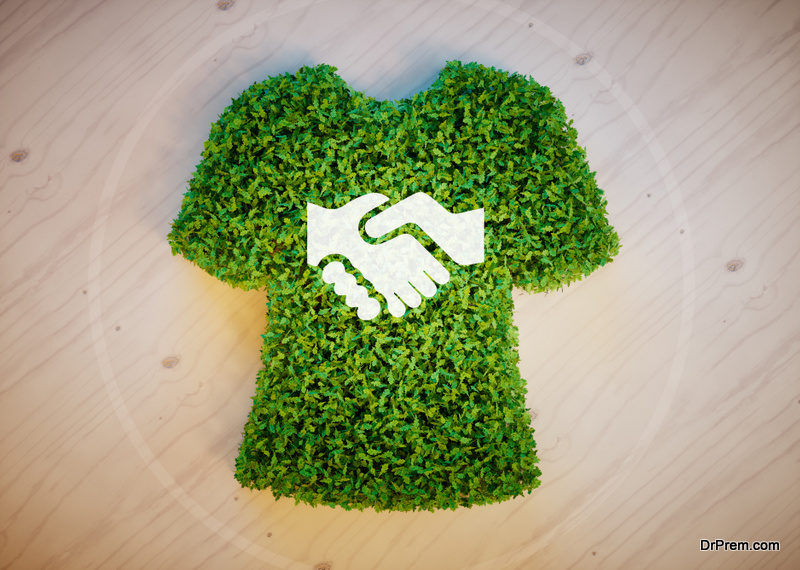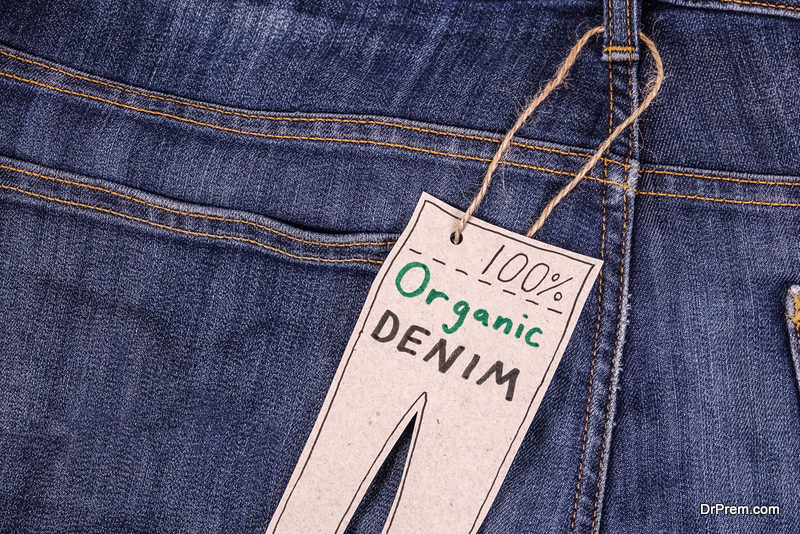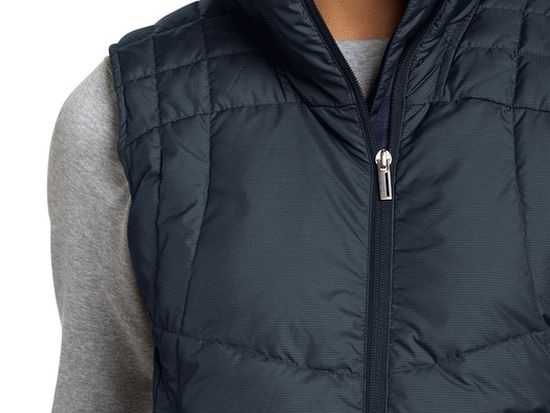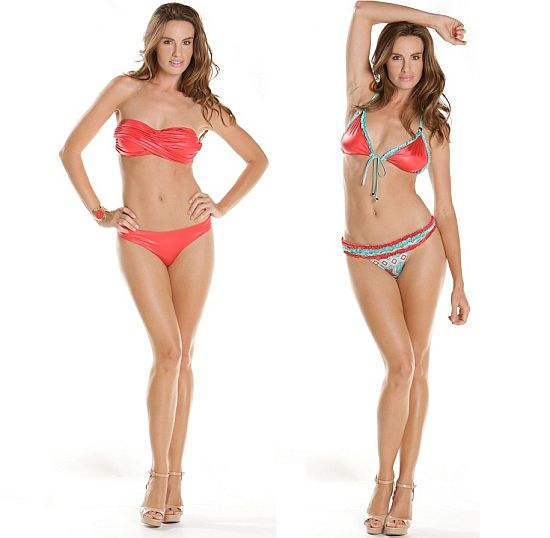Eco fashion is a trend now, but a few decades earlier, there was only one kind of fashion. Unethical and unsustainable methods of garment production led to the environment being polluted and the labor involved were treated unfairly. Some major fast fashion companies were exposed in various countries and people became aware of the harmful effects of the garment industry. Some of the same brands started to produce clothes sustainably and there were organizations who spread the message of sustainable fashion around the world. Here is a brief history of eco-fashion to help you gain a better understanding of this fashion trend:
The history of eco-fashion: Founders, Past trends and More
Before we discuss about the history of eco-fashion, here’s a little about the terms we will be using:
Sustainable fashion:
 Sustainability was defined as the development which meets present needs without compromising future generations’ ability to meet their requirements. According to this definition, fashion which has less impact on the environment during the designing, production and consumption of garments is eco-fashion or sustainable fashion. It includes extending life of garments, recycling and using recycled material.
Sustainability was defined as the development which meets present needs without compromising future generations’ ability to meet their requirements. According to this definition, fashion which has less impact on the environment during the designing, production and consumption of garments is eco-fashion or sustainable fashion. It includes extending life of garments, recycling and using recycled material.
Ethical Fashion:
Ethical fashion focuses on the environment, but also on the social impact of the fashion industry. Ethical fashion focuses on the use of child labor, living wages, health and safety, working conditions as well as forced labor in the industry. It’s not just the labor laws which are considered, ethical fashion goes beyond laws and tries to generate publicity and awareness in people about the fair treatment of workers, animals and cruelty-free fashion.
Ethical fashions holds human lives and the environment in more value than business profits, and organizations work for dignified and honorable working conditions.
Fast Fashion:
 This is a comparatively new term which has caught on since the year 2013. It is a modification of Fast Food, and denotes clothes which are manufactured quickly, cheaply fitting the latest trends, usually copied from the runway shows.
This is a comparatively new term which has caught on since the year 2013. It is a modification of Fast Food, and denotes clothes which are manufactured quickly, cheaply fitting the latest trends, usually copied from the runway shows.
Fast Fashion is what we should move away from, as it has been associated with incredible amounts of waste, highly polluting methods of manufacturing and deplorable work conditions. H&M, TopShop, Zara, Zaful, Fashion Nova, Missguided, BooHoo, are some of the worst offenders. Though brands like H&M have become slightly more inclined to ethical fashion and sustainability, due to pressure from eco friendly customers.
Now that the terms are clearer, let’s get to know more about how fashion originated. Fashion industry in the earliest stages was driven by the wealthy who wore the latest trends and made them fashionable. To be fashionable you had to have status and wealth. The Parisian couturiers, in the 19th century, catered to the wealthy and their designs became the trend-setters.
In the 20th century, with the industrial revolution, clothes were mass produced, which led to the consumerist society in the 50s, mainly due to marketing by the big brands.
History of eco-fashion : The Pre-Raphaelite movement
There were some artists who foresaw the negative impact of new fashion and methods that industrialization brought. These were the Pre-Raphaelites comprising of William Holman Hunt, Dante Gabriel Rossetti and John Everett Millais who were the founders of the group. They stood against industrialization of design and art. They valued nature and craftwork, and were against division of labor, which was the precedent of assembly line.
The Pre-Raphaelites took their art outside – they painted in nature, on site, with bold details and sharp colors. They employed live models and their models were also either their wives or lovers. They also had an impact on defining the later fashion, as they boldly rejected restrictive corsets and the crinoline supports worn by the women of fashion of the day. Bows, ruffles, trimmings were distracting and unnecessary. Their garments were dyed with natural, vegetable dyes, as opposed to the chemical dyes which were garish and bright.
Therefore, the pre-cursor to all eco-fashion movements in the modern times is the Pre-Raphaelite movement.
The unlikely founders of sustainable fashion: The hippie movement
 The 60s were a time which saw young people rebelling against the establishment, through their choice of clothes, lifestyle and music. These young people, the ‘hippies’, were also anti-fashion. They embraced the natural fabrics and were all for a return to the simpler mode of life, as against the prevailing highly consumerist society of that time. They were the founders of the sustainable fashion.
The 60s were a time which saw young people rebelling against the establishment, through their choice of clothes, lifestyle and music. These young people, the ‘hippies’, were also anti-fashion. They embraced the natural fabrics and were all for a return to the simpler mode of life, as against the prevailing highly consumerist society of that time. They were the founders of the sustainable fashion.
The Goth and Punk movements of the 70s-80s rejected conventional fashion and preferred the unique vintage and second-hand clothing of earlier eras, thus in a way starting the trend of recycling or re-wearing clothes.
The later part of the 80s saw a movement against fur, a start of the ethical fashion movement. This movement has been highly successful, as it led to real fur being completely banished from fashion.
However, the rise in offshore manufacturing and increase in global communication saw the manifestation of fast fashion – fashion which was cheap, accessible and easily dispensable. People no longer looked for quality, but the trend of buying new clothes every season came into vogue. The increased demand led to increased production.
During this period of fast fashion, the eco-fashion movement also began to be reflected in clothes. Esprit launched the Ecollection, Katharine Hamnett and Patagonia started to educate the masses about the terrible environmental impact of fast fashion industry. But sadly, the condition of the workers of this industry, sitting in the far east and working day and night under the worst labor conditions, came to light only after Bangladesh’s Rana Plaza collapsed in 2013.
This was the saddest event in the history of fashion, as more than a 1000 people lost their lives. The history of eco-fashion saw a renewed interest as people worldwide understood how their choices impacted the lives of others who were making their clothes.
Today, there are a greater number of people on the planet who make their garment choices, keeping ethical wear in mind, rather than just blindly buying clothes. Every single choice matters!
The start of recycling trend in eco fashion
Recycling clothes has been a traditional aspect of society, especially for past generations as most people wore hand-me-downs while growing up, by choice and due to economic reasons. They knew the art of mending and innovatively using the same clothes in many different ways. People valued good quality clothes, made from raw materials, which could be used again and again. This was the type of recycling which continues today, but only in the poorer countries.
Most ethical wear designers have started using pre-worn clothes to convert them into new clothes very recently. But there is an evidence of a silk dress made in 18th century from a dress of the 17th century. This proves that hand-woven silks retained their values and used them through the years even in the 18th century.
More recently, designers and fashion houses have been re-using textiles to produce recycled clothes.
The evolution of sustainable clothing
 It was in the 1980s when consumers became aware of the chemicals, especially flammable chemicals, which were being used in clothing. These fears were mainly directed to cotton clothes which were grown with pesticides. In the beginning, people feared for harm to their own health due to clothes which were grown using pesticides.
It was in the 1980s when consumers became aware of the chemicals, especially flammable chemicals, which were being used in clothing. These fears were mainly directed to cotton clothes which were grown with pesticides. In the beginning, people feared for harm to their own health due to clothes which were grown using pesticides.
Thus began the terms ‘chemical-free’ and ‘natural’ labels which started appearing on clothes to reassure buyers.
The company C&A, which supplies organic cotton, began to sell organic cotton garments in the 90s, and in 2010, the company sold a whopping 23 million pieces. These figures also indicate the deeper awareness and desire of people to own sustainable clothing. People now recognize that chemical free clothes are better for the environment and for them.
Beginning of ethical fashion
After ‘Levi Strauss & Company’ was exposed using prison labor in China to make their jeans by the Washington Post in the year 1992, the world woke up to the labor conditions in the fashion world. The whole world started to notice the fair trade or the lack of it in the garment industry. After Levis, a lot of other major brands were also exploited, who practiced ‘overseas’ fashion.
The book ‘No Logo’, written by the author Naomi Klein, was an epoch making book. It was an extremely influential book which exposed the truth behind many of the global giants worldwide. It was a best seller internationally, and set the ground for ethical fashion. This book made a serious impact on the history of eco-fashion, as people came to know about the ins and outs of the industry.
It triggered ethical fashion and the beginning of many eco conscious brands, as well as the re-branding of established brands into more ethical brands. This was in response for the growing demand of people to know more about the origin of the clothes they bought. Everyone was reeling from the Bangladesh Rana Plaza incident.
This incident as well as other similar incidents, brought to light the desperate working conditions of the workers, not only in Bangladesh, but all over the world – countries such as Vietnam, China and elsewhere where there were no rules and regulations as to the age of the workers, no consideration for their safety and health and the only thing that mattered was profit.
The rise of sustainable consumerism
 Nike, the giant in athletic wear, came under fire in 1991 due to the poor wages and working conditions of the workers in its Indonesian factories. There were protests from consumers and boycotts of its products. The media too depicted the company in a negative role. The company had to change its tactics in order to stay relevant. After more than twenty years, Nike has rebuilt itself into one of the most eco conscious brands.
Nike, the giant in athletic wear, came under fire in 1991 due to the poor wages and working conditions of the workers in its Indonesian factories. There were protests from consumers and boycotts of its products. The media too depicted the company in a negative role. The company had to change its tactics in order to stay relevant. After more than twenty years, Nike has rebuilt itself into one of the most eco conscious brands.
Similarly, other big brands followed suit and have tried to boost their image as good corporate and win the consumer’s hearts and money. They still try to drive down manufacturing costs in many ways, but they also pay attention to the environment.
Patagonia is an example of a brand which has always followed sustainability and demonstrates to its customers how sustainability is part of their work ethics. Levis has its WellThread, Water<Less, Waste<Less collections, and even luxury fashion houses are trying to get a foothold in the eco fashion industry.
The creation of Ethical Fashion Forum
In 2005, some fashion entrepreneurs as well as business owners met in London. Their common goal was to create successful fashion brands which had a positive environmental and social impact. They were of the belief that they would be able to achieve this goal as a collective effort rather than individually. In 2006, the EFF was established with 20 members from four different continents. Their mission was to help fashion businesses succeed along with people, planet and profit.
After a decade, the 20-member group had expanded to many thousands of members across the globe. The EFF ran shows, had directories and held events dedicated to eco/ethical fashion. They created a network of experts who lent their expertise for projects for the UN, UNCTAD, BBC, British Council and more. EFF, and thus became one of the most important developments in the history eco-fashion.
The first SOURCE expo, the world’s foremost sustainable sourcing show was held in 2009. There were many commendable achievements of EFF though the years, including the Massive Online Open Course MOOC on sustainable fashion. In 2018, the Common Objective is launched which becomes one of the primary sources of information as well as connections for sustainable practices in fashion.
What does the future hold?
 Eco fashion has a bright future, as the garment industries have to clean up their act, in order to follow the industrial wastage norms and chemical management programs for the benefit of the environment. The governments of various countries where clothing factories are located have to set up stricter rules and regulations which will enforce garments being produced responsibly, and workers will have better wages and working conditions.
Eco fashion has a bright future, as the garment industries have to clean up their act, in order to follow the industrial wastage norms and chemical management programs for the benefit of the environment. The governments of various countries where clothing factories are located have to set up stricter rules and regulations which will enforce garments being produced responsibly, and workers will have better wages and working conditions.
With the advance of technology, recycling of clothes will become easier, and with the development of sustainable fibers, enhanced product traceability, reduced packaging and transparency of supply chain will make the eco fashion movement even more deep rooted and widespread than before.




